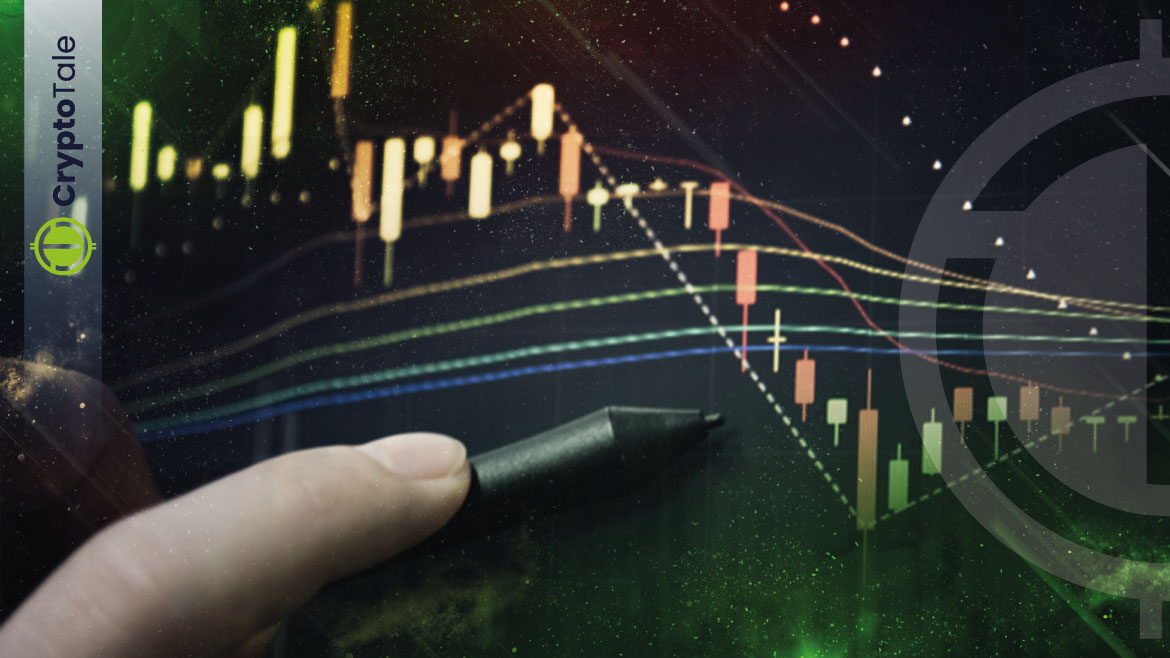
Given the highly volatile and unpredictable nature of crypto prices, traders and investors attempt to gather as much information about crypto and its underlying blockchain as possible with the aim of formulating an opinion of how crypto prices will move in the near future.
The analysis that traders and investors employ either involve fundamental analysis, technical analysis, or the analysis of blockchain metrics, also referred to as on-chain metrics.
There are a number of platforms that can strengthen a trader’s suite of analysis tools and methodologies, which will be covered in this article.
What Is Fundamental Analysis?
Fundamental analysis is a method of evaluating the intrinsic value of an asset and analyzing a number of factors that could have an influence on its price in the future. This form of analysis is based on external influences and events, and can also include industry trends and financial statements.
Fundamental analysis is one of the two major methods of market analysis. The other method is technical analysis.
What Is Technical Analysis?
Technical analysis is a means of examining and attempting to predict price movements in the financial markets. This form of analysis makes use of historical price charts and market statistics and is based on the idea that if a trader can identify previous market patterns, they can form a fairly accurate prediction of future price trajectories.
Technical analysis is based purely on the price charts of an asset and is solely the identification of patterns on a chart that is used to predict future movements. This is in contrast to fundamental analysis which focuses on an asset’s ‘true value’.
Technical Indicators
Technical indicators are chart analysis tools that assist traders in understanding charts and analyzing them. These indicators are mainly used to generate buy and sell signals. Therefore, traders can act on price changes and make decisions.
Technical indicators are included in most analysis platforms, so any of the supported technical indicators can be applied to a chart that you are looking at.
On-Chain Analysis Explained
Fundamental and technical analysis have been the two dominant forms of analysis in the markets up until now. That is because the advent of blockchain technology also resulted in the introduction of on-chain analysis.
On-chain analysis is the method of using information from a blockchain ledger to determine market sentiment. More specifically, it involves looking at blockchain metrics. The two most common blockchain metrics used in blockchain analysis are transaction data and crypto wallet balances, which are two things that are useful when trying to decide whether to invest or not.
On-Chain Data
As you may recall, on-chain data is based on on-chain transactions. Furthermore, on-chain transactions are transactions that miners validate and are considered valid only when the blockchain is updated.
On a blockchain network, each block contains all of the new transactions recorded on the specific block. These transactions stored all of the relevant information such as the amount transacted, public addresses, miner fees, and much more. Analysis tools retrieve this data from the blockchain, giving any trader or investor easy access to all of these on-chain metrics.
Why Is Market Data Important?
Collecting market data as an analysis tool requires a lot of work and integrating with various exchanges. But the work does not stop there, because the data then needs to be normalized, average prices need to be calculated, and much more has to be done to the data continuously with no errors or mistakes.
The blockchain enables analysis tools to collect accurate data on the market. Through the analysis of this data, you can then come up with a thesis of future market movements. However, it is important to keep in mind that the crypto markets can turn on a dime. So, practice caution when analyzing and trading the crypto markets.
Blockchain Data for Predictive Analytics
Although on-chain analytics is still an emerging field, transactional data of other payment methods such as credit cards have been used for predictive analytics for decades.
A key difference between public blockchains is that transactional data contains no personally identifiable information of the sender and receiver. This information is instead represented cryptographically in the form of blocks.
In the case of Bitcoin, the SHA256 hash function provides the ability to hash a string of transactional data into a unique identifier for each and every transaction.
Best Blockchain Analysis Platforms
Santiment
First on the list of the best blockchain analysis platforms is Santiment, which offers three different plans. These three plans are Free, Pro for $49, and Pro+ for $249, which is billed monthly. With the Pro+ plan, you will unlock exclusive access to features such as custom education and onboarding, as well as a closed chat with Santiment market analysts.
Santiment does not only offer on-chain analysis, it also gives investors and traders access to social analysis that is strongly related to daily price movements. The most common social metrics are social dominance, social context, and social volume. Santiment also provides other features like adding alerts, watchlists, social trends, unique market metrics, indicators, and many more.
Charts Available on Santiment
One of the charts available on Santiment is the exchange inflow and outflow, which is defined as the amount of a coin deposited and withdrawn from an exchange platform’s wallets.
Another type of chart included in Santiment is supply distribution charts, which are two main supply distribution charts that show the metric by the number of addresses or by the balance of an address.
CryptoQuant
The pricing for CryptoQuant plans starts at around $29 for the advanced plan, $99 for the professional plan, and $699 for the premium plan. In addition to this, it has a free plan that gives you access to view all the metrics.
Metrics available on CryptoQuant
The most popular metrics offered by CryptoQuant are exchanges in/outflow. These indicate the selling and buying pressure and help with quick decision-making.
CryptoQuant also provides a network value to Metcalfe (NVM) ratio. This is a valuation metric for the BTC network that uses daily active addresses and Metcalfe’s law is used to compare how overvalued or undervalued a digital asset is compared to its peers
Messari
Messari is a data analysis platform for the global crypto asset community. Messari believes that data is knowledge, and with knowledge, you are able to invest with confidence.
To make this a possibility, Messari provides free charting services, but you can also subscribe to the platform for $29 per month to gain access to additional features such as exclusive long-term weekly research, downloadable CSV data, and much more.
Charts Available on Messari
The one chart available on the Messari platform is a realized market cap chart, which is a variation of market capitalization which values UTXO based on the price when it was last moved. This is different to the market capitalization’s current value.
Another chart available on Messari is a real-time price chart for hundreds of supported assets with over 10 years of historical data available.
Glassnode
Glassnode is next on the list of the best crypto analysis platforms and includes a free plan and 2 paid plans. The 2 paid plans are $39 for the advanced plans and $799 for the professional plan.
Charts Available On Glassnode
A chart for the number of active addresses is one of the charts available on glassnode, and is strongly related to the daily price movements. It indicates that there will either be selling or buying pressure in the market in the near future.
A second chart is a number of sending and receiving addresses that let you know if people are transferring from or to their wallets. Therefore, you can derive holding and selling positions in the markets.
There are more features included in Glassnode such as coin comparisons, integration with TradingView, and more.
Dune Analytics
One of the main unique features of Dune Analytics is the ability to view on-chain data using query codes. The platform comes with a free plan to query blockchain data with SQL, create dashboards, as well as share your charts.
There is also a paid plan for $390 which will give you extra features like exporting results to CSV, and skipping query queue time.
Charts Available on Dune Analytics
One of the charts available on Dune Analytics is an aggregator share of decentralized exchange (DEX) volume, which offers real-time visualization of the aggregator share of decentralized exchanges.
With the platform, you also have access to a DEX market share chart, which is a detailed graph of DEX market share by volume.
There are additional features on Dune Analytics such as dashboards, uniquely surfing data using SQL, and many more features.
Nansen
Nansen does not offer a free plan due to its unique experience. Pricing for the platform starts at $149 for the Standard package, $1,490 for the VIP package, and $2,500 for the Alpha package.
Charts Available on Nansen
ETH exchange flow is one of the charts available on the Nansen platform and lets you know whether or not there is any unusual behavior in ETH exchanges inflow and outflow. These inflows and outflows result in uptrends or downtrends.
There is also a chart that shows stablecoins on exchanges that lets you view stablecoin volume on almost every exchange available. The chart also includes a 7-day change.
IntoTheBlock
IntoTheBlock charges a monthly flat fee of $10 and allows you to save 17% if you choose to bill annually. Unfortunately, there is no free plan available for the platform.
Charts Available on IntoTheBlock
The IntoTheBlock platform gives you access to a chart that shows the daily active addresses, which enables you to identify if there are any unusual behaviors that may lead to significant price movements.
Using the platform, you can also view the number of transactions at different price points. You also have access to 10 years worth of historical data.
Other features included in the platform are price predictions, DeFi insights, and more.
Breadcrumbs
This is another platform that comes with a free plan and two paid plans. It has a Lite plan which costs $49 per month, and a Promo plan that will cost $79 per month.
Charts Available on Breadcrumbs
There is a chart that shows the sending and receiving addresses on each blockchain included on the Breadcrumbs platform. There is also a chart for outgoing and incoming volume for specific crypto for each address. This includes detailed information about each transaction too.
Block Explorers
Block explorers are online blockchain browsers that can show the details of all transactions that have ever happened on a blockchain network.
The most popular blockchains and cryptocurrencies each have their own block explorers. There are also block explorers for altcoins, as well as ones that can be used on multiple networks. A block explorer can be used to find any specific transaction or view the recent history of a blockchain more generally.
What Can You Do With a Blockchain Explorer?
A blockchain explorer allows users to view blockchain activity. Users might also use block explorers to track the status of a pending transaction or to view the balance of a wallet that they hold without having to use the crypto wallet itself. These block explorers also allow blockchain analytics to be done on on-chain data.
Other things that can be done with a blockchain explorer are to examine the history of any wallet address, explore change addresses, view blocks that aren’t attached to the main blockchain, explore the largest transactions that were sent over the past 24 hours, discover who mined a specific block on the blockchain, and explore the genesis block
How Do Blockchain Explorers Work?
Basically, a blockchain explorer is a blockchain search engine and can be used to search for just about any information pertaining to the state of a specific blockchain that someone might want to know. The details of every crypto wallet and all transactions performed on the blockchain, and much more, can be found using a blockchain explorer.
For a blockchain explorer to do what it does, it relies on a relational database, structured query language (SQL), and an application programming interface (API).
Relational Database
A relational database enables the storage of data in a table and all of the data’s associated pieces of data, as well as how they relate to each other. Hence why it is called a relational database because there is a relationship between data stored in the database.
Structured Query Language (SQL)
SQL is a language used to search a database or to give a query to the database. Using SQL, you can create a table in a database, insert records into the newly created table, search for a given term in the database, and pretty much any other task that you would want to do on data in a database.
Application Programming Interface
An API is a protocol that makes it possible for users to communicate with other computers through software. The formatting details for responses that are sent and received by the software being used is defined by the API.
Examples of Blockchain Explorers
There are different blockchain explorers for different types of cryptocurrency. Some explorers can be used to search multiple blockchains, while others can only be used to get transaction data relating to one chain.
Blockchain.org
Formerly known as Blockchain.com, Blockchain.org is a popular Bitcoin block explorer and allows users to search the Bitcoin network by transaction, address, or block. Many Bitcoin users have most likely made use of Blockchain.org at some point in their crypto journey to monitor or record their Bitcoin transactions.
Blockchair
While most block explorers work on only one blockchain, Blockchair can be used to search multiple chains. Using Blockchair, you can search the Ethereum, Bitcoin Cash, and Bitcoin blockchains. You can also look up keywords such as mining difficulty, Mempool size, and nodes.
Tokenview
Tokenview can also be used to conduct searches on multiple blockchains. In fact, this China-based explorer was launched in 2018 and can be used to explore more than 20 blockchains.
Etherscan
Etherscan may be the most popular blockchain explorer for the Ethereum network and allows users to conduct searches for ETH addresses, wallet balances, transactions, smart contracts, and more.
Coinmarketcap 101: What Is Coinmarketcap And How Does It Work?
Coinmarketcap is the authority when it comes to tracking cryptocurrency prices in real-time. Since its inception in May 2013, it’s become one of the best-known brands in the rapidly-growing crypto-space.
The website and smartphone apps want to make cryptocurrencies discoverable to all. And to empower everyday investors with factual information that’s always accurate and always of the highest quality.
Coinmarketcap remains one of the most trusted sources for retail investors, institutions, and media when it comes to comparing the prices of crypto-assets.
To Recap
Cryptocurrency market analysis platforms add a third type of analysis to your collection of market analysis tools: on-chain analysis. There are a number of cryptocurrency market analysis platforms in the market. Some offer a free plan while others will require you to pay a monthly subscription to access additional features.














